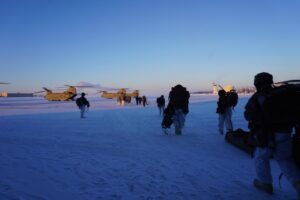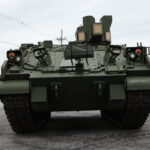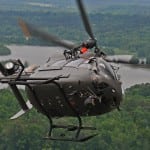
The Army on Monday officially reactivated its 11th Airborne Division to be based in Alaska as the service looks to bolster its capability for Arctic operations, which will include shedding its number of Stryker vehicles in this shift toward future cold-weather, mountainous operations. Gen. James McConville, the Army chief of staff, said the move to reflag U.S. Army Alaska as the 11th Airborne Division will include transforming the current 1st Stryker Brigade Combat Team, 25th Infantry Division into a lighter,…

 By
By 











